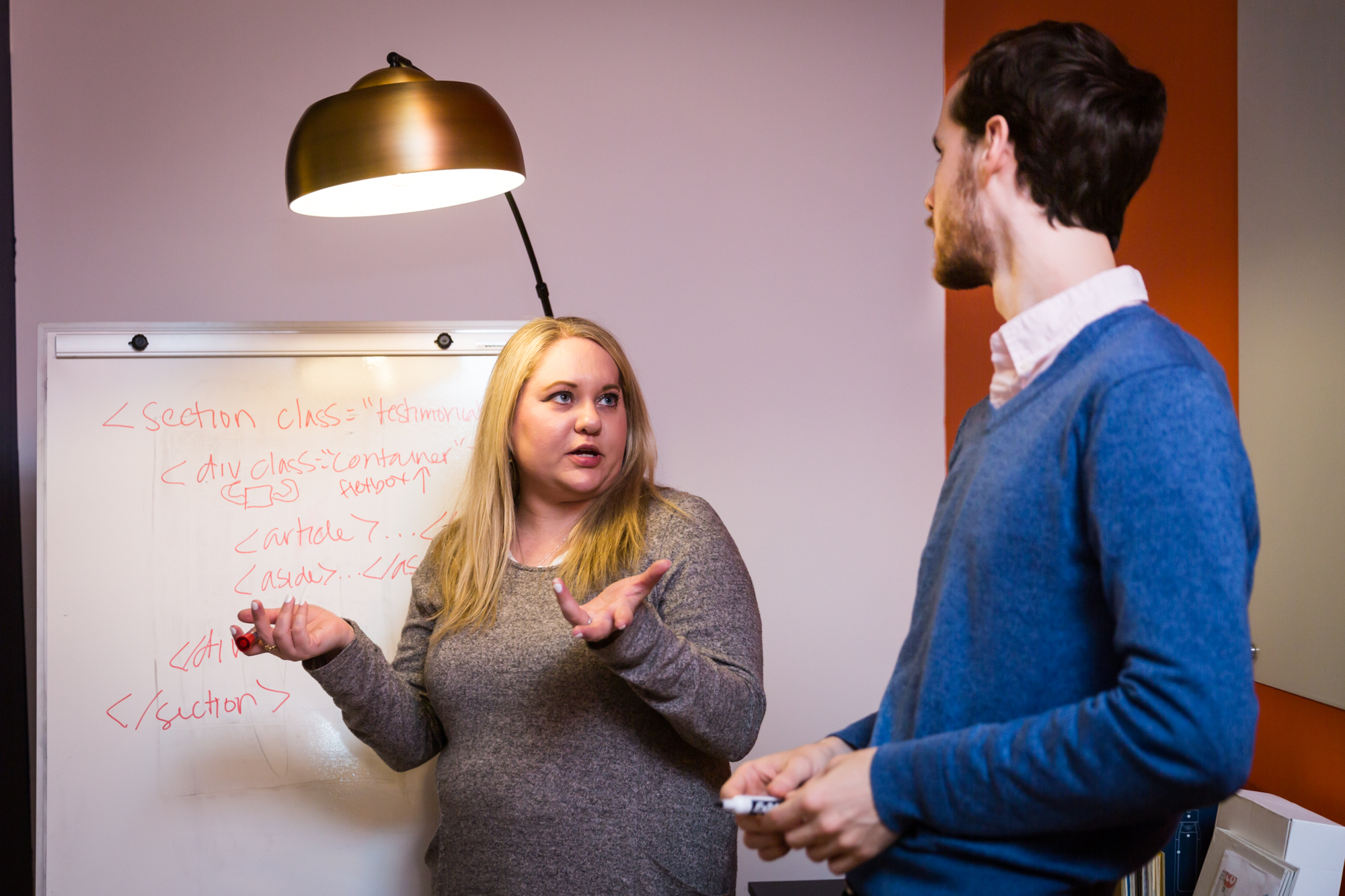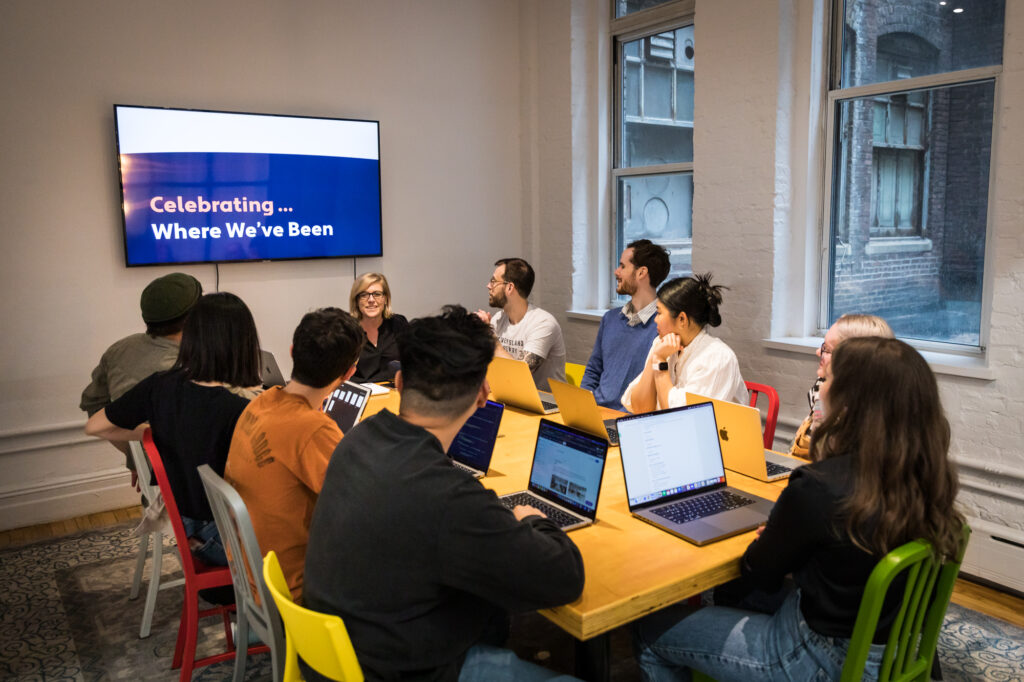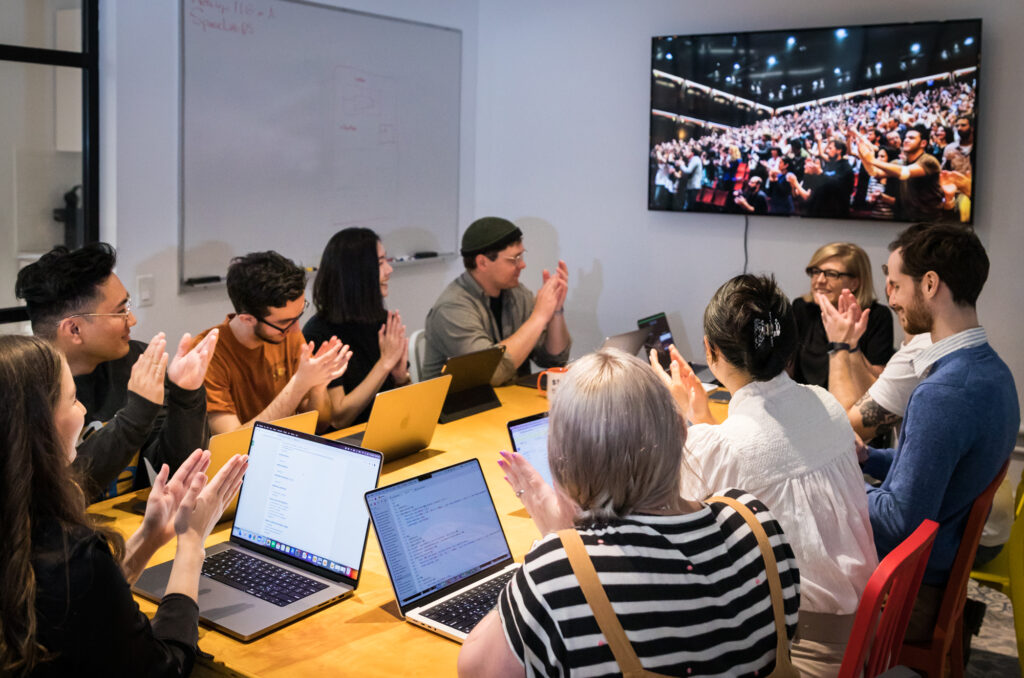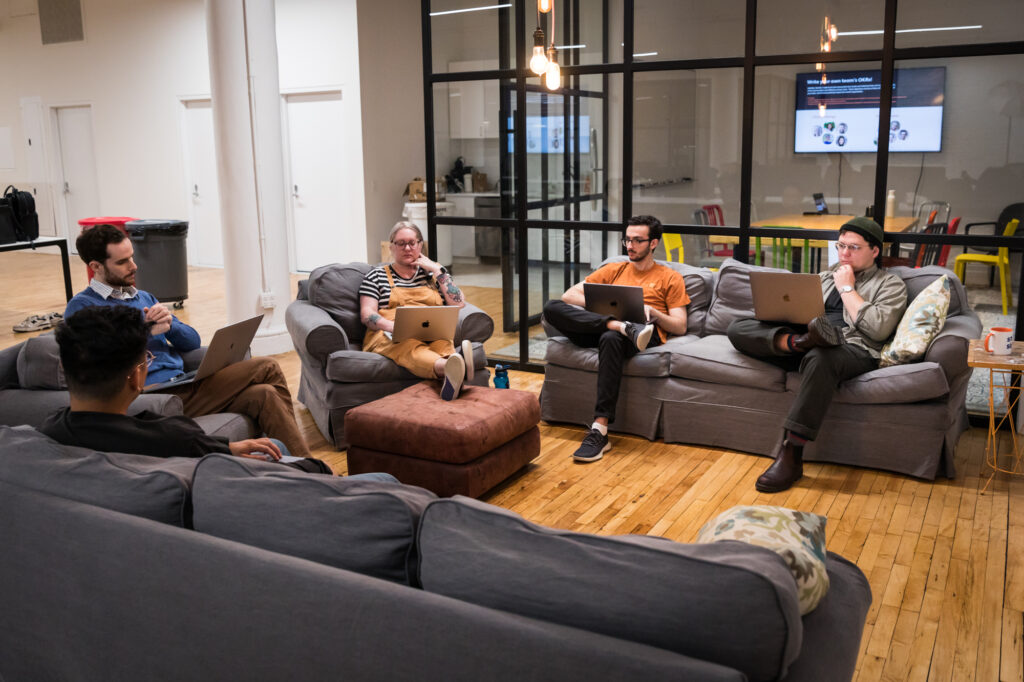In 2020, “Because everyone has one” isn’t an unreasonable answer to the question, “Why does your company need a website?”
That said, it’s worthwhile to consider the role that your shiny new website will play in your sales and marketing funnel. Will you personally be directing potential leads to the site? Will you be sharing your site’s content to your social media followers, and hoping they convert? Will you be buying online ads? Or are you hoping prospective customers or readers find you via online search?
If you suspect that a large volume of your high intent, prospective customers are typing the same phrases into search engines like Google and Bing, optimizing your site to appear at the top of search results for some of those phrases could be a fantastic strategy. Achieving the coveted page 1 Google placement involves a multifaceted approach–tactics typically referred to as “search engine optimization” (SEO).
Unsurprisingly, SEO is one of the most asked about services here at Studio Simpatico. Though we are not an SEO shop, I typically describe us as “SEO aware,” since we do build SEO strategy and tactics into much of our process. In this article, I’ll be breaking down the high level techniques typically used to optimize a website for search, and outlining which are provided (and not provided) by Studio Simpatico as part of a typical website design and development engagement.
Keyword Strategy for Core Pages
Can Simpatico help?
Yes, though we don’t provide ongoing monitoring services.
As a UX firm, our discovery process involves diving deep with you to understand the myriad attributes of your target customers, as well as the best way to message them. As part of this process, we also do some upfront, evergreen keyword strategy — in other words, we think about what your ideal customer might be searching for. In conjunction with this ideation, we conduct some light keyword research (using tools like AdWords Keyword Planner or KW Finder) to get a sense of the search volume. It’s also a great way to brainstorm ideas for combinations of keywords.
It’s particularly important to think about keywords that signal “high intent.” To use ourselves as an example: we might optimize for “website design,” but this is a broad set of keywords that likely includes people looking to learn about designing websites (not our target customer). Compare that to something like “website design agency.” Although there is less volume, someone who is searching for those combination of words is more likely to be a prospective customer.
As part of our site map process, we outline which pages we plan to optimize for different keywords. We then make sure that those pages contain those keywords in the URL string, title tag, and throughout the content of the page. We also populate the title and description Yoast fields (which is what show up in search results) with content that we believe will be compelling and inspire people to click and visit your website, given what we know about your target customers.
After your site launches, it’s smart to track search appearance and conversion data of all your pages within Google Search Console. This type of ongoing monitoring and tweaking is a good idea and typically offered by an SEO agency; Studio Simpatico does not offer this service.
More reading on keyword research::

Keyword Strategy for Ongoing Content
Can Simpatico help?
Unfortunately not.
In addition to the core “evergreen” pages of your website, content marketing is often a big part of our clients’ online strategy: producing and promoting valuable content via search and social to drive customer acquisition. If you’re hoping this content is well-optimized for search, there is obviously an SEO component to the content production work: you’ll want the strategy to be informed by keyword-centric thinking, you’ll want to ensure you’re following best practices about content length and the inclusion of links (internal ones, as well as external ones to authoritative sites), etc. Just as we don’t offer ongoing copywriting and content generation services, Studio Simpatico does not offer ongoing SEO support.
Backlinking
Can Simpatico help?
Unfortunately not.
Google and other search engines are constantly crawling the internet. They view and rank all websites in terms of “authority” on different subjects, and they develop these opinions largely through who is linking to whom. For example, if WordPress.org links to Studio Simpatico and the hyperlink text is “best WordPress agency in the world,” Google would likely see Simpatico as an authority on WordPress, moreso than if my mom (love you, Mom!) posted the same link from her website.
A process that in some way mimics the web version of PR, creating a “backlinking” strategy can often involve looking at competitors’ backlinks for inspiration and ideas.
Simpatico does not offer these services.
Redirects and 404s
Can Simpatico help?
Yes — as part of a redesign engagement, but not on an ongoing basis.
If as part of the new website, you’re planning to change your URL structure (for example, if you’re planning to change studiosimpati.co/get-in-touch to studiosimpati.co/contact-us), you’ll want to make sure that all the links that Google has previously crawled don’t suddenly “404.” To do this, you’ll want to make sure you have redirects in place. As the name might suggest, redirects redirect the user (and Google) from one page to another. We typically set up redirects as part of a website relaunch, but we don’t monitor 404s or broken links on an ongoing basis.

The Technical Stuff
Can Simpatico help?
Heck yes!
Finally, there are sundry technical best practices that factor into how well-optimized your site is in search. An SEO agency will usually check many or all of the following items in this non-comprehensive list within their scope of work. Though we’re happy to have another set of eyes checking our work, Studio Simpatico does do the following as part of our standard website engagements:
Installation of Yoast
We always install Yoast, the gold standard SEO WordPress plugin. You can learn more about all the features it provides here, but in short, it comes with lots of tools out of the box that help with optimization.
Code semantics and site responsiveness
The days of it being okay that your website doesn’t elegantly adapt for mobile are long gone — not only is it bad form, but search engines will ding you if your site doesn’t look or work properly on mobile. Designing and building sites that are responsive is part of our M.O., and has been since our company’s inception in 2017 (in fact, we often start the process with mobile designs). Additionally, our QA process always includes extensive testing across a variety of browsers and device sizes.
Optimizing for Speed
There always have been and always will be tradeoffs between design and speed. Craigslist.org enjoys incredibly fast page speed times, but something so barebones likely doesn’t make sense for most brands or digital products. As part of any project, we aim to find that sweet spot between user experience and loading speed.
Another note about speed: We typically do test our page speeds using Google’s PageSpeed Insights and Lighthouse. Although we like their checklist of suggestions, their score is based on how many of those checklist items you pass, not how fast your site is. (It’s kind of like Rotten Tomatoes: the score communicates how many critics liked the movie, not how good they thought it was.) I mention that because there are some checklist items we may consciously choose to ignore for user experience reasons which results in a less than stellar score, but the overall page speed (which we test with GTmetrix) might still be relatively speedy.
Submitting XML site to Search Console
When requested, we are happy to submit your XML site map to Search Console so Google has a list of all the pieces of content that your shiny new site includes.
 hi, i'm
hi, i'm 









